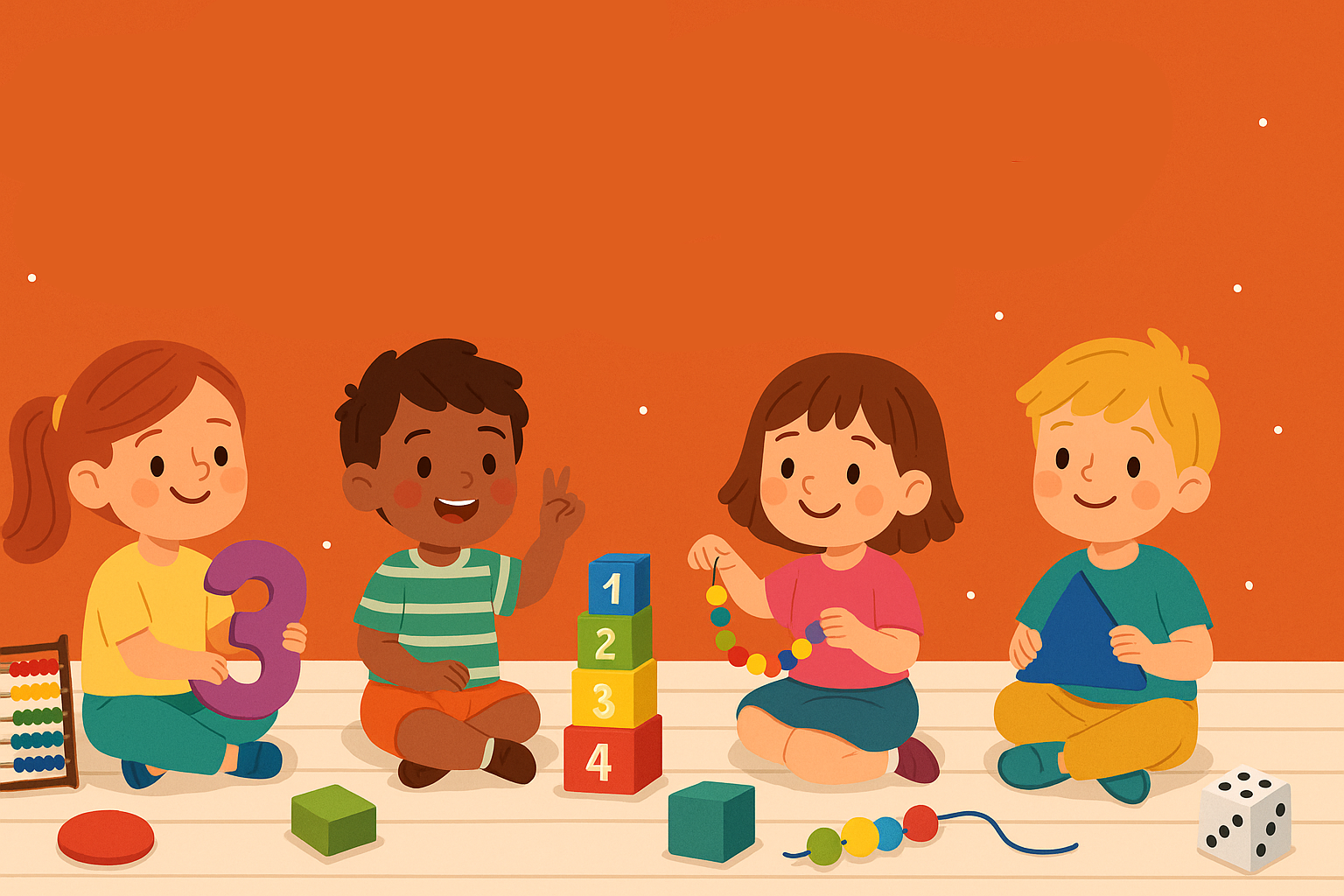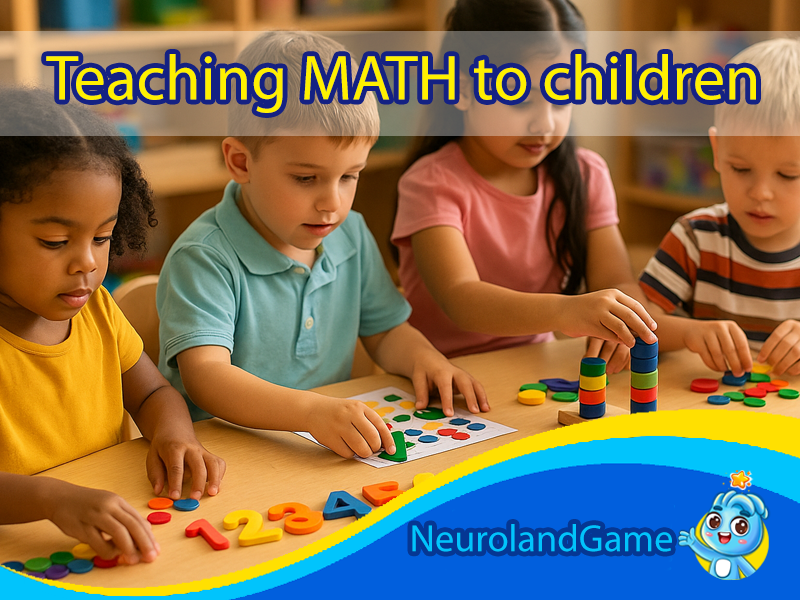Early childhood is a critical period for cognitive development, and introducing mathematical concepts during this stage can set the foundation for future academic success. However, traditional methods may not resonate with young learners. Integrating play into math education not only makes learning enjoyable but also enhances understanding and retention. This article from Neuroland can help you learn the best games and tips for teaching math to Children Under 7 easily.
Core Math Skills for Children Under 7
Before diving into specific games and activities, it’s essential to understand the foundational math skills appropriate for children under 7:

- Number Recognition and Counting: Identifying numbers and understanding quantity.
- Basic Addition and Subtraction: Understanding the concepts of adding to and taking away.
- Shape and Geometry Recognition: Identifying and understanding basic shapes and their properties.
- Measurement and Comparison: Understanding size, length, weight, and volume.
- Patterns and Sequencing: Recognizing and predicting repeating patterns.
- Sorting and Classification: Grouping objects based on attributes.
Age-Specific Math Games and Activities
Teaching Math to Ages 3–4
1. Number Recognition and Counting
- Counting Songs and Rhymes: Engage children with songs like “Five Little Ducks” or “Ten in the Bed” to reinforce counting sequences.
- Number Matching Cards: Create cards with numbers and corresponding quantities (e.g., the number 3 with three dots) for matching activities.
2. Shape and Geometry Recognition
- Shape Sorting Toys: Use toys that require matching shapes to corresponding holes, enhancing shape recognition and fine motor skills.
- Shape Hunt: Encourage children to find objects around the house or classroom that match specific shapes.
3. Sorting and Classification
- Color and Size Sorting: Provide various objects (buttons, blocks) for children to sort by color, size, or type.
- Nature Collection Sorting: Collect leaves, rocks, or flowers and sort them based on different attributes.
Teaching Math to Ages 5–6
1. Basic Addition and Subtraction
Story Problems: Create simple stories that involve adding or subtracting objects, helping children visualize math problems.
Finger Counting: Use fingers to demonstrate basic addition and subtraction, making abstract concepts tangible.
2. Measurement and Comparison
Measuring with Non-Standard Units: Use items like paper clips or blocks to measure the length of objects.
Weight Comparison: Use a balance scale to compare the weight of different objects, introducing concepts of heavier and lighter.
3. Patterns and Sequencing
Bead Stringing: Create patterns using beads of different colors and shapes, enhancing pattern recognition.
Clap Patterns: Clap hands in specific sequences and have children replicate or predict the next sequence.
Incorporating Technology
Digital tools can complement traditional play-based activities. Interactive apps and online games designed for preschoolers can reinforce math skills through engaging visuals and interactive challenges. However, it’s essential to balance screen time with physical play to ensure holistic development.
One great example of an educational math tool for young children is the Neuroland app. It includes over 10 interactive math games designed specifically for preschoolers, covering essential concepts like counting, shapes, measurement, and number sense through fun, hands-on play. The difficulty level of each game is carefully adapted to the child’s age and ability, ensuring an engaging and developmentally appropriate experience. Download Neuroland here and start exploring math through play!
Tips for Educators and Parents

1. Integrate Math into Daily Routines:
Involve children in activities like cooking or shopping, discussing measurements and quantities.
2. Encourage Open-Ended Questions:
Ask questions like “What do you notice about these shapes?” to stimulate critical thinking.
3. Celebrate Effort Over Accuracy:
Focus on the learning process rather than just correct answers to build confidence.
4. Provide Diverse Materials:
Offer a variety of manipulatives like blocks, beads, and puzzles to cater to different learning styles.







